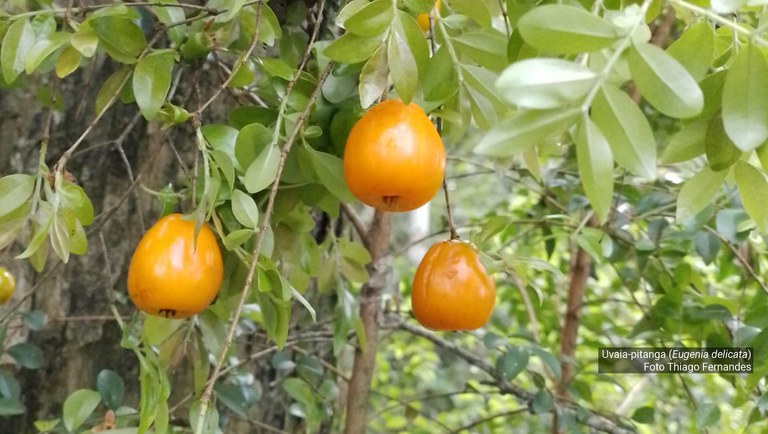Notícias
Two fruit tree species discovered in areas of Atlantic Forest in Rio de Janeiro State

Two species of fruit trees, threatened with extinction, have been discovered in areas of environmental protection in the Rio de Janeiro municipalities of Niterói and Maricá. The discovery was made by researchers from the Research Institute Botanical Garden of Rio de Janeiro (JBRJ), Federal Rural University of Rio de Janeiro (UFRRJ), State University of Rio de Janeiro (UERJ) and Federal University of Ceará (UFCE), who found specimens of the species at locations in the Serra da Tiririca State Park (Niterói and Maricá), Municipal Natural Park of Niterói, Municipal Natural Monument of Pedra de Itaocaia (Maricá), and the Environmental Protection Area of Morcego (Niterói), Santa Cruz Fort, Pico Fort and Rio Branco Fort (Niterói).
The species were named Eugenia delicata (uvaia-pitanga) and Eugenia superba (niterói yellow cherry). Both belong to the genus Eugenia, one of the most diverse of the Brazilian flora, and produce edible and tasty fruits for humans, and also for wildlife, which disperse their seeds.
Both are tall trees emerging from dry forests in the hills of the metropolitan region of Rio de Janeiro, in the Atlantic Forest biome. The uvaia-pitanga has a brown, fissured trunk, similar to several other Eugenia species. However, the crown can be recognized by its long, pendulous branches, with relatively small and delicate leaves, which is why it is called Eugenia delicata.
The Niteroi cherry has a reddish or cream trunk depending on the season, with an exfoliating bark, resembling the trunk of guava trees. It is a species with a straight trunk, broad crown and deciduous (it loses its leaves during the dry season). Due to the majestic size of the trees observed, the researchers named it Eugenia superba.
The findings were described in a recent article published in the English scientific journal Kew Bulletin, a journal of the Royal Botanic Gardens, Kew. In the text, the researchers warn that the newly discovered species should already be considered endangered, according to the criteria of the International Union for Conservation of Nature (IUCN), a global organization that has guidelines for risk assessments.
- The uvaia-pitanga is known by only six points of occurrence, and was categorized in the study as Endangered (EN). The Niterói yellow cherry is even rarer, known from only three locations, and was classified in the research as Critically Endangered (CR). The edible and tasty fruits of these species can and should serve as an appeal for their conservation. In addition, they are also key players in the ecological dynamics of the Atlantic Forest, participating, for example, in the maintenance of wildlife - says researcher Thiago Fernandes, PhD student at the National School of Tropical Botany of the Botanical Garden of Rio de Janeiro (ENBT/JBRJ).
Despite the two species are threatened with extinction, the discovery is celebrated by scientists.
- The findings show the importance of the municipal and state conservation units that protect the urban forests in Rio de Janeiro State. These are very rich forests, which certainly shelter many other species not yet discovered by science - says Thiago Fernandes.
According to the researcher, the two species had already been collected and deposited in a scientific collection (herbarium), during a floristic inventory - a study that aims to identify species of flora of a region - in 2008, in the State Park of Serra da Tiririca, in Niterói. However, at the time, it was not possible to identify them, since the material available for study was insufficient.
Later, through a collaborative effort between researchers from different national institutions, the trees were monitored between 2021 and 2022.
- It was then possible to accumulate complete material, from flower buds to mature fruit. After collecting the materials and detailed examination of samples in scientific collections, we were able to confirm that, in fact, these were new species to science - says Thiago Fernandes.
According to the researcher, it is estimated that Brazil is home to about 50 thousand plant species, which corresponds to approximately 18% of all plant species in the world. This estimate, however, may be far from contemplating the real diversity of plants in the country, since there are still many regions considered sampling gaps.
- As demonstrated by recent findings, even the urban forests of the Rio de Janeiro coast have specific points that have been poorly sampled that may harbor many other species unknown to science - he concludes.
Access the article.